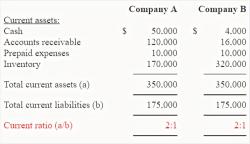What are the best cards to transfer debt?
The best credit cards for transferring debt typically offer introductory balance transfer promotions with low or 0% annual percentage rates (APR) for a specified period. These cards can help you consolidate and pay down high-interest debt more affordably. Keep in mind that the specific card that's best for you may depend on your individual financial situation and credit score. Here are some popular options to consider:
Chase Slate:
- Chase Slate often features a 0% introductory APR on balance transfers for a certain period (usually 15 months or more).
- It may have no balance transfer fees during the first 60 days after account opening, making it a cost-effective option for transferring existing debt.
Citi Simplicity Card:
- The Citi Simplicity Card frequently offers a 0% introductory APR on balance transfers for a specific duration (often 18 to 21 months).
- This card stands out for its straightforward terms and no late fees, which can be helpful if you want to avoid penalties while paying down your balance.
Discover it Balance Transfer:
- The Discover it Balance Transfer card offers a 0% introductory APR on balance transfers for a set period.
- It also provides cashback rewards, making it a dual-purpose card for balance transfers and ongoing spending.
Wells Fargo Platinum Card:
- The Wells Fargo Platinum Card often comes with a 0% introductory APR on balance transfers for a defined period (typically 18 months or more).
- This card may be suitable if you need an extended interest-free period to pay down your debt.
American Express Everyday Credit Card:
- While it's not exclusively a balance transfer card, the American Express Everyday Credit Card may offer introductory 0% APR on balance transfers for a limited time.
- It's worth considering if you want to earn rewards while paying down your balance.
When selecting a credit card for debt transfer, consider the following factors:
- The length of the introductory 0% APR period.
- Any balance transfer fees associated with the card.
- Your credit score, as you may need a good to excellent credit score to qualify for the best offers.
- Ongoing features, such as rewards or cashback programs, annual fees, and other terms and conditions.
It's important to read the fine print, understand the terms and conditions, and compare multiple cards to find the one that aligns with your financial goals and helps you manage your debt effectively. Additionally, be aware that transferring debt should be part of a broader debt repayment strategy, which may include creating a budget and repayment plan.
Managing Debt: Best Credit Cards for Balance Transfers
Balance transfer credit cards can be a valuable tool for managing debt. They allow you to transfer your existing credit card balances to a new card with a lower interest rate. This can save you money on interest payments and make it easier to pay off your debt.
When choosing a balance transfer credit card, there are a few things to keep in mind:
- Interest rate: Look for a card with the lowest possible introductory interest rate. Introductory interest rates typically last for 12-18 months, so it's important to choose a card that will give you enough time to pay off your balance before the higher standard interest rate kicks in.
- Balance transfer fee: Most balance transfer credit cards charge a fee, which is typically a percentage of the amount you transfer. Be sure to factor in this fee when choosing a card.
- Annual fee: Some balance transfer credit cards have an annual fee. This fee is typically waived for the first year, but it's important to check to see if there is an annual fee after that.
Here are a few of the best balance transfer credit cards available in October 2023:
- Citi® Diamond Preferred® Card: 0% APR on balance transfers for 21 months, then a variable APR of 18.24% to 28.99%. Balance transfer fee of 3% ($5 minimum). $0 annual fee.
- Discover it® Balance Transfer: 0% APR on balance transfers for 18 months, then a variable APR of 19.74% to 28.24%. Balance transfer fee of 3% ($3 minimum). $0 annual fee.
- Chase Slate Edge℠: 0% APR on balance transfers for 18 months, then a variable APR of 17.99% to 26.99%. Balance transfer fee of 5%. $0 annual fee.
Transferring Debt: Credit Card Options for Financial Relief
If you are struggling to manage your credit card debt, transferring your balances to a new card with a lower interest rate can be a helpful way to save money and make it easier to pay off your debt.
However, it is important to use balance transfer credit cards wisely. Be sure to pay your bill on time and in full each month to avoid incurring interest charges. Also, be aware of the balance transfer fee and annual fee associated with each card.
Here are a few tips for using balance transfer credit cards effectively:
- Only transfer balances to cards with lower interest rates. There is no point in transferring balances to a card with a higher interest rate.
- Pay your bill on time and in full each month. If you don't pay your bill in full, you will be charged interest on the remaining balance.
- Be aware of the balance transfer fee and annual fee. Factor in these fees when choosing a card.
- Don't open too many new credit cards. Opening too many new credit cards in a short period of time can damage your credit score.
Reducing Debt Burden: Choosing the Ideal Credit Cards for Balance Transfers
When choosing a balance transfer credit card, it is important to consider your individual needs and financial situation. Here are a few factors to keep in mind:
- How much debt do you need to transfer? Make sure to choose a card with a high enough credit limit to accommodate your balance transfer needs.
- What is your credit score? Your credit score will determine the interest rate you are offered and whether or not you are approved for a card.
- How long do you need to pay off your debt? Choose a card with a long enough introductory interest rate period to give you enough time to pay off your balance before the higher standard interest rate kicks in.
It is also important to compare offers from multiple card issuers before choosing a card. This will help you to find the best possible interest rate and terms for your needs.
Here are a few additional tips for reducing your debt burden:
- Create a budget and stick to it. This will help you to track your income and expenses and make sure that you are not overspending.
- Make more than the minimum payment on your credit cards each month. The more you pay each month, the faster you will pay off your debt and save money on interest payments.
- Consider getting a part-time job or side hustle to earn extra money to pay down your debt.
- Seek professional help if you are struggling to manage your debt on your own. A credit counselor or debt management company can help you to develop a plan to pay off your debt and improve your financial situation.












